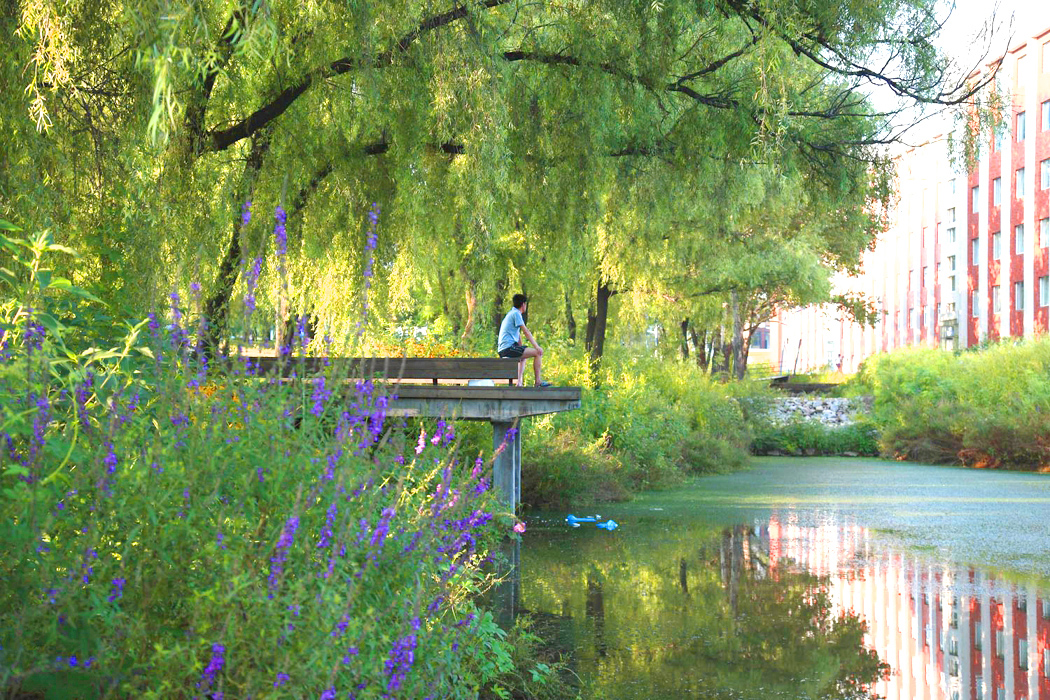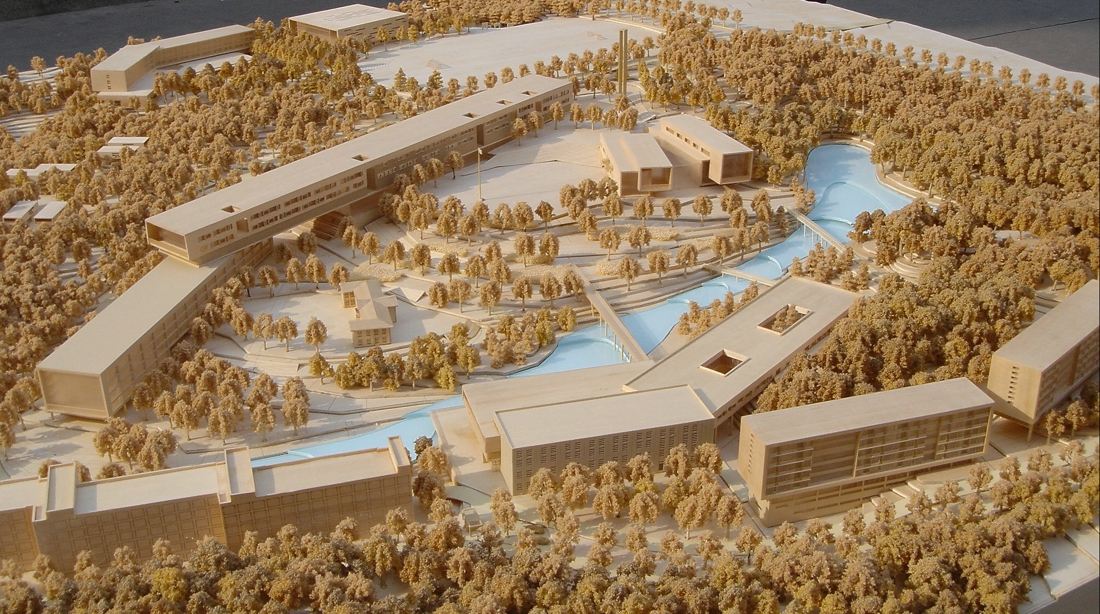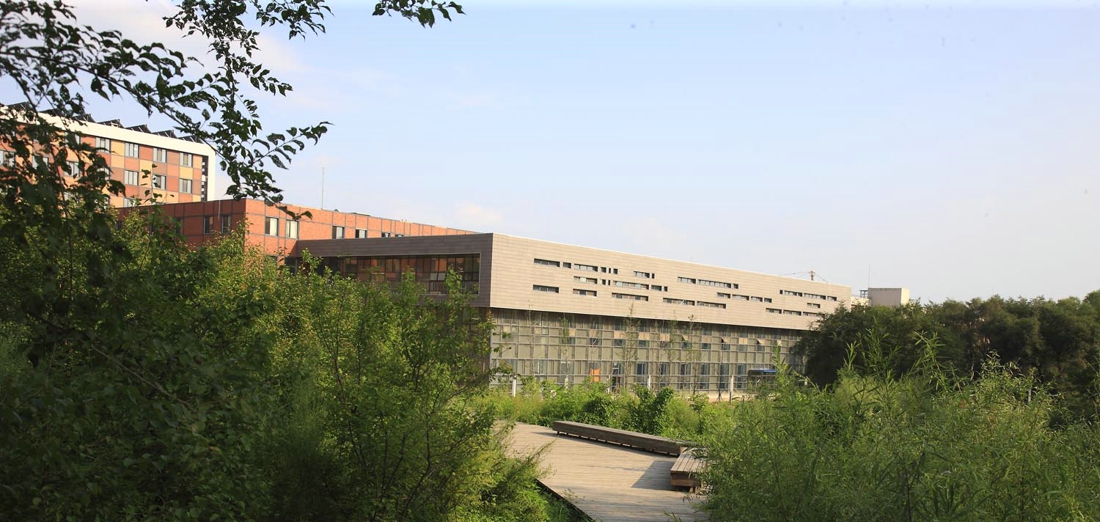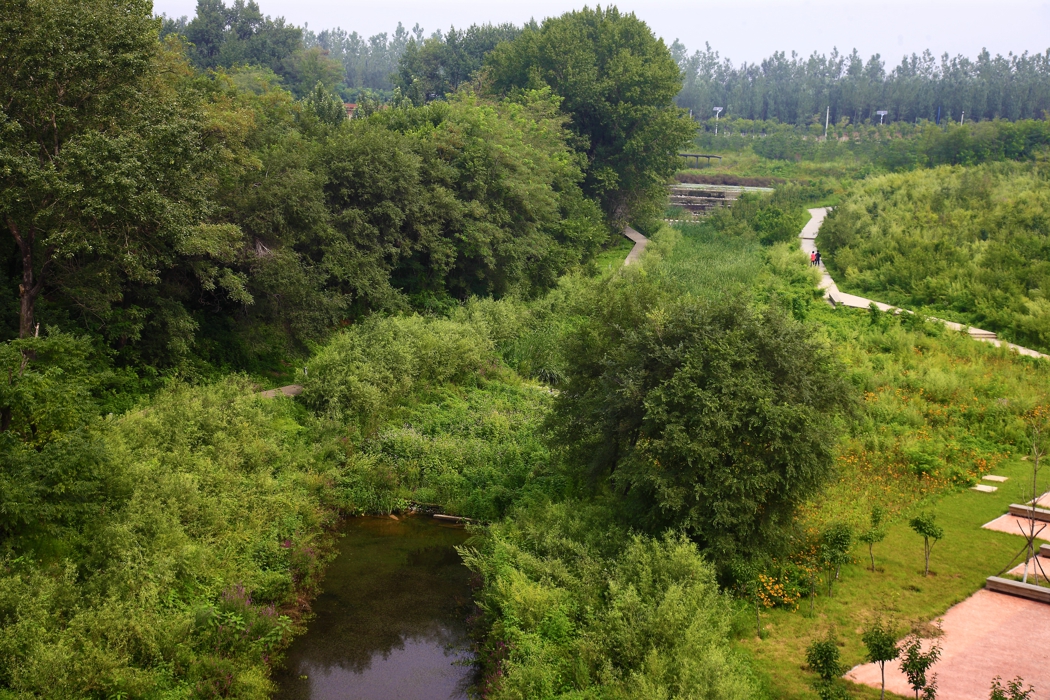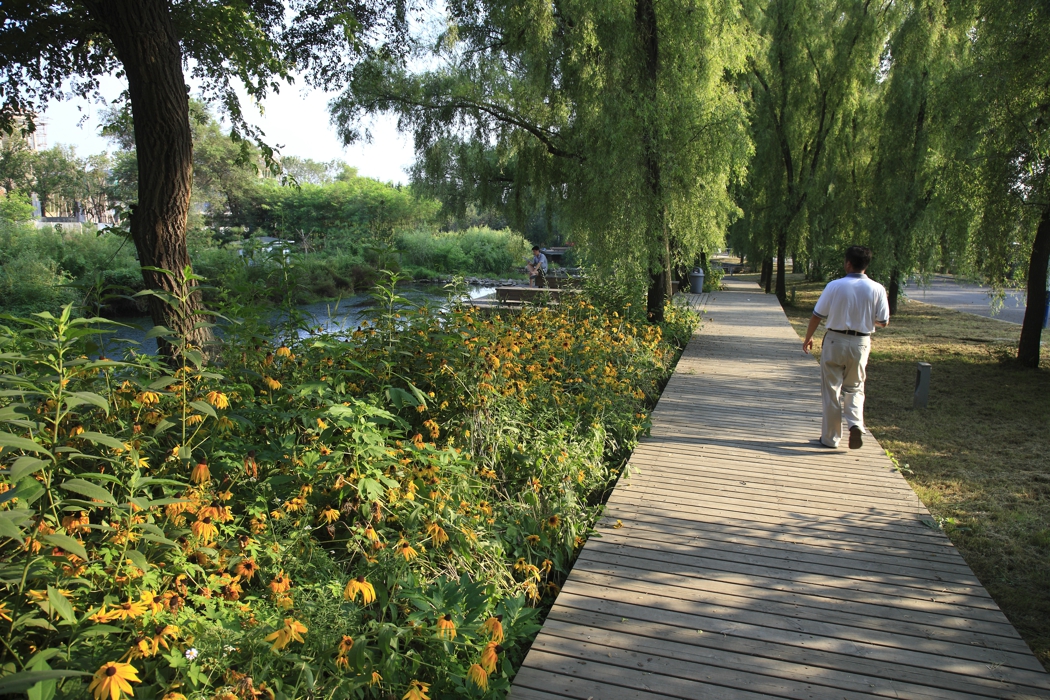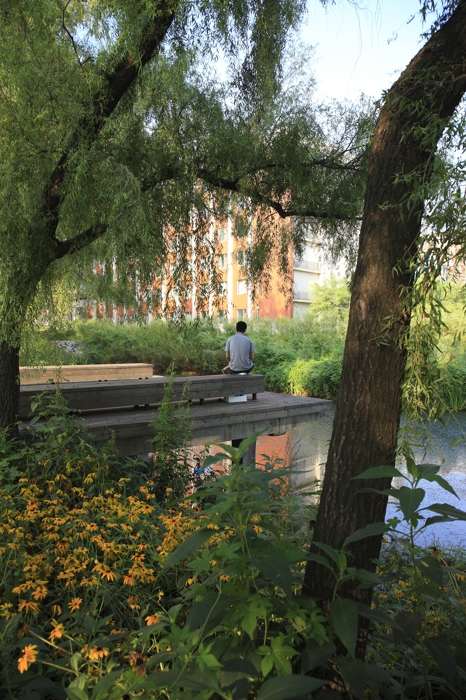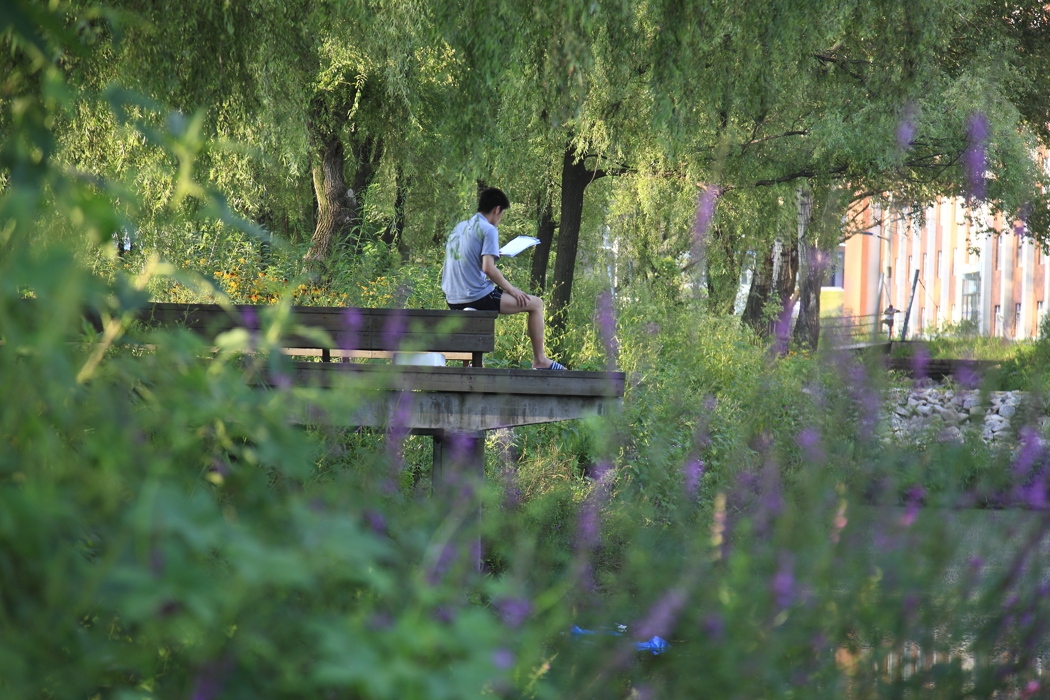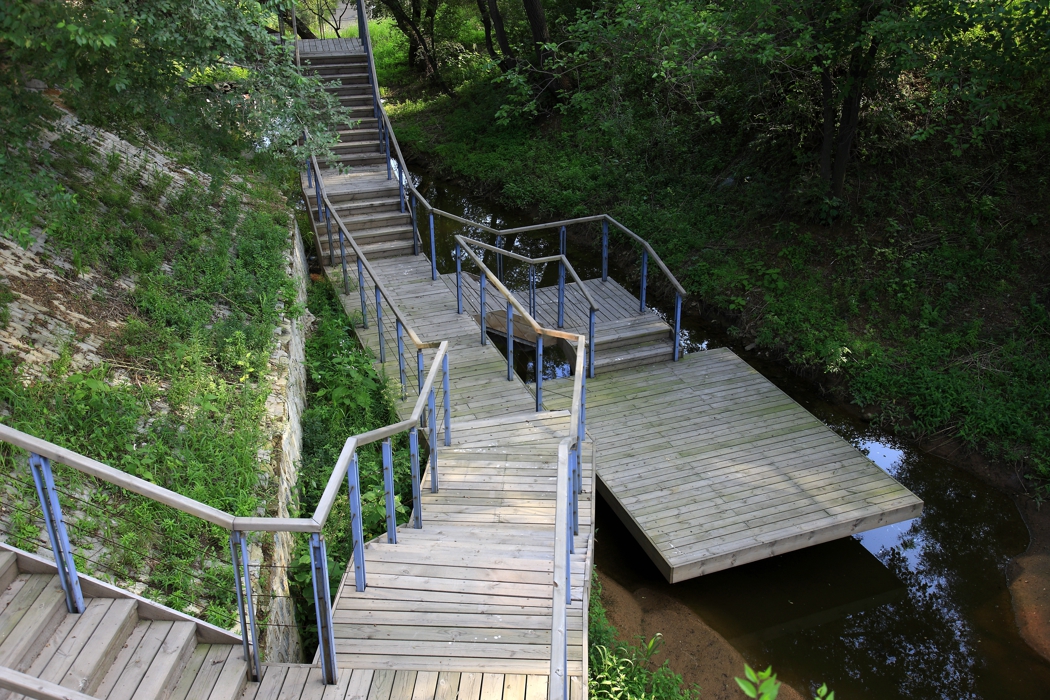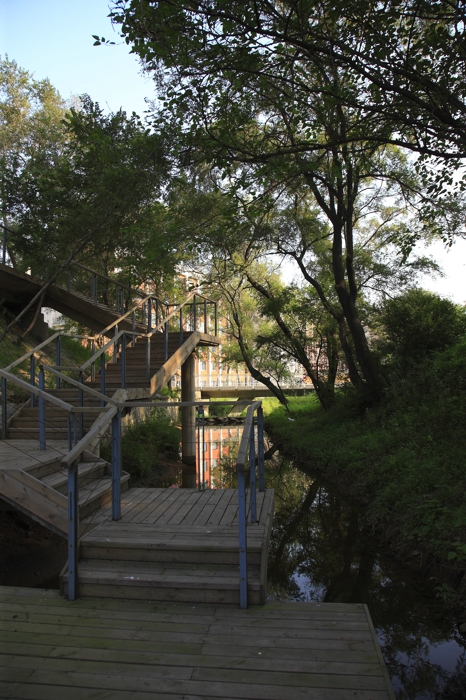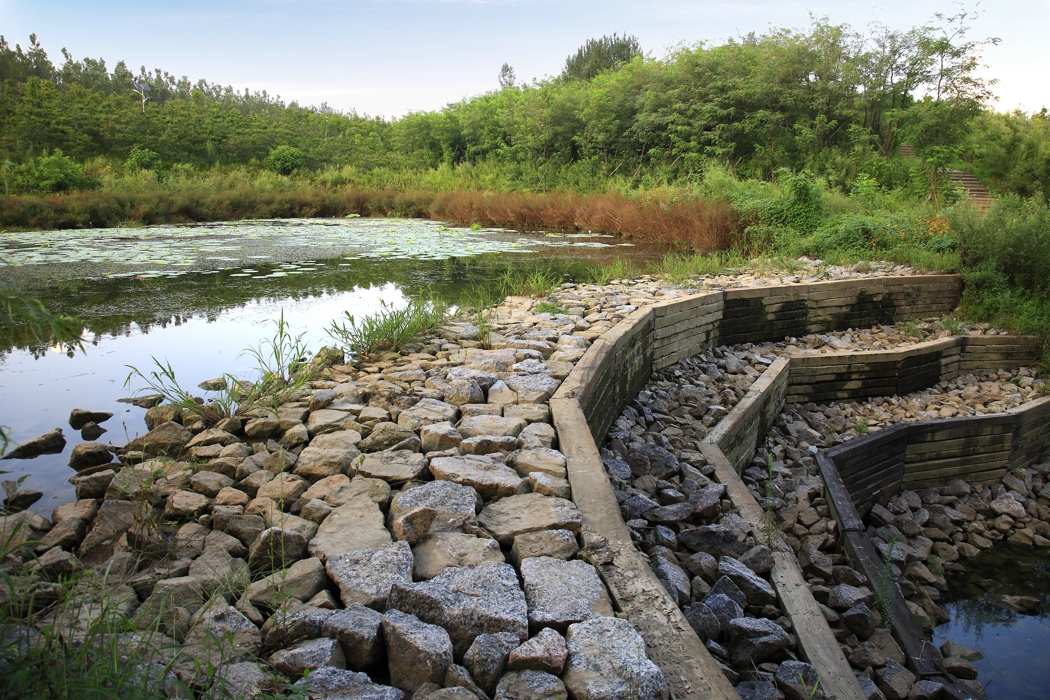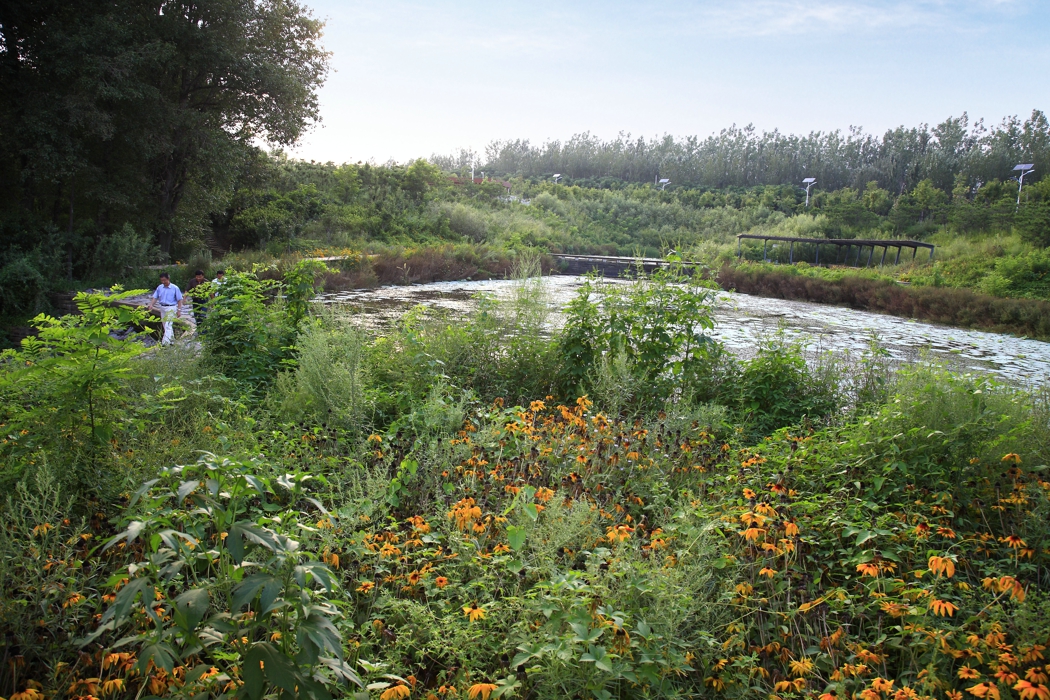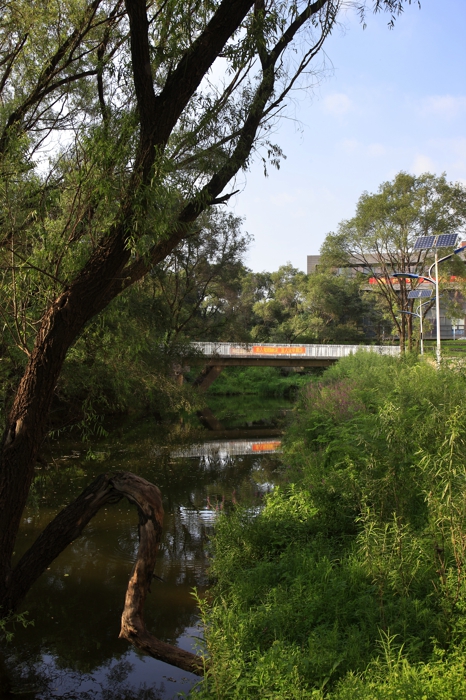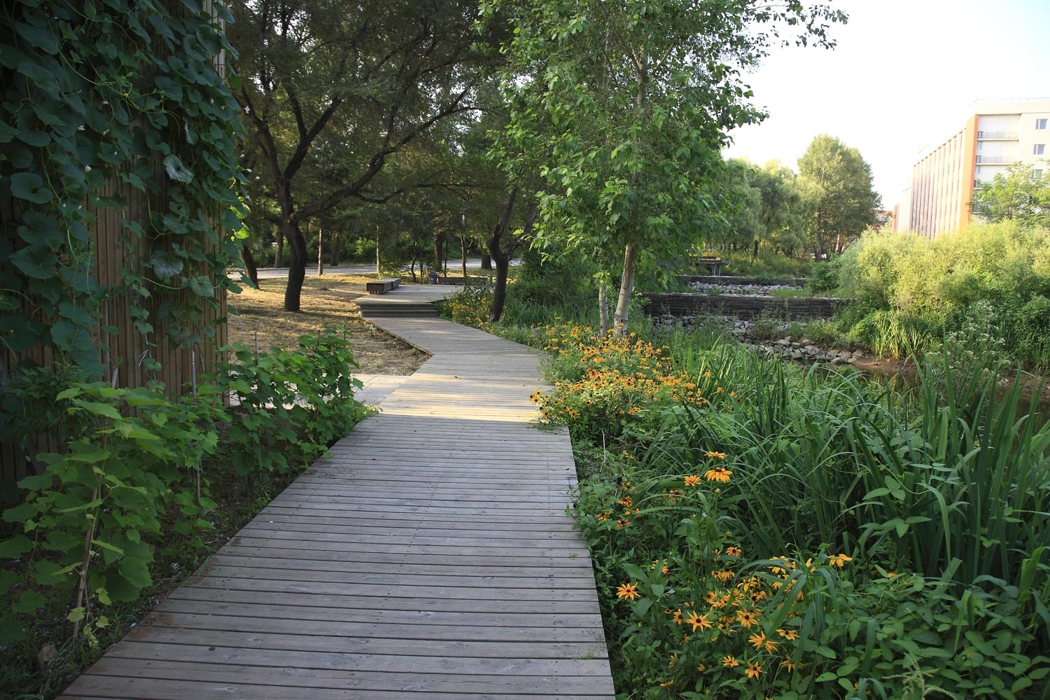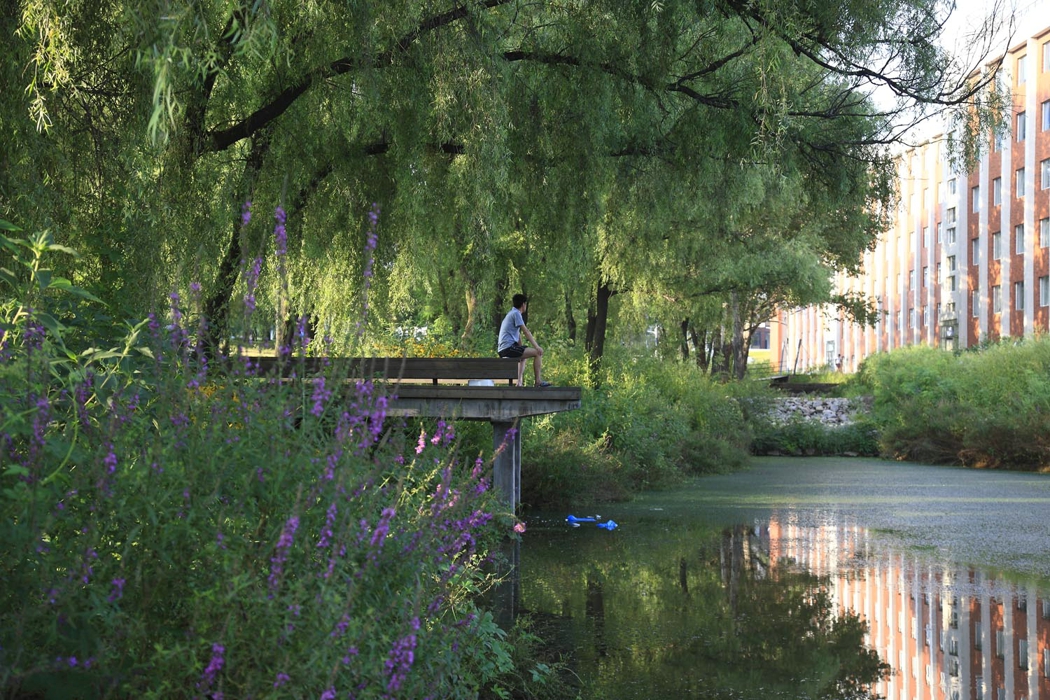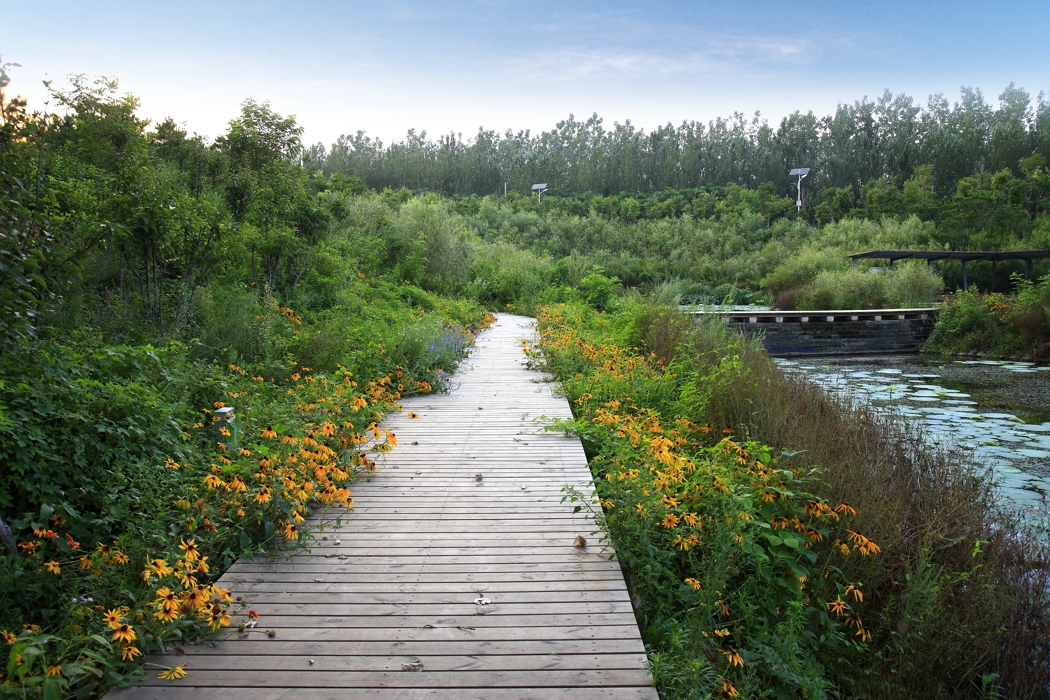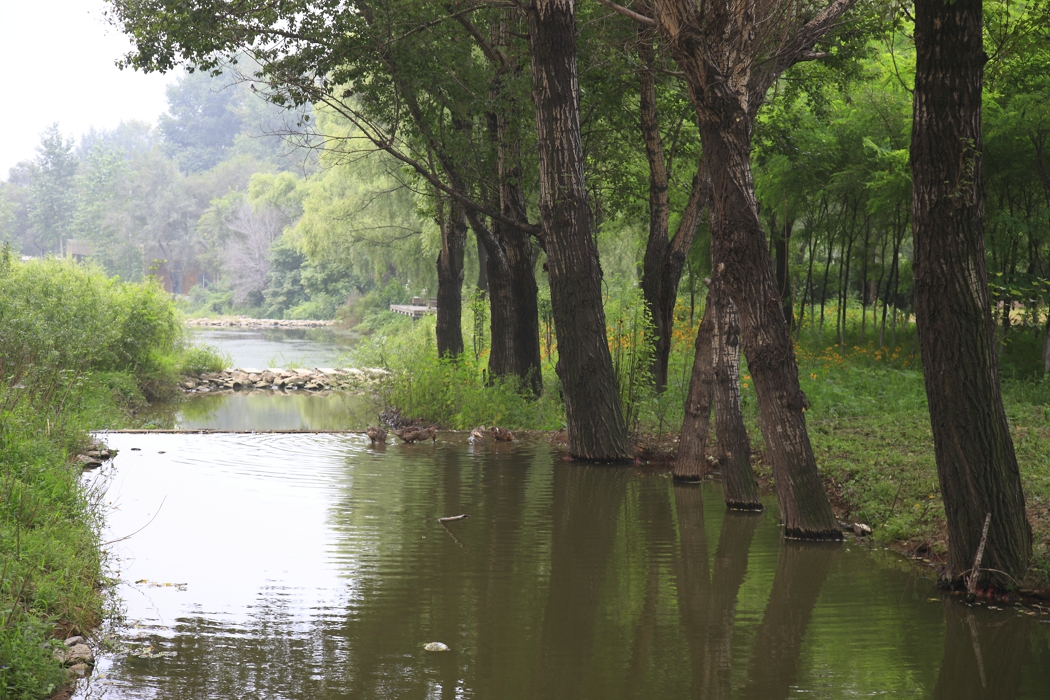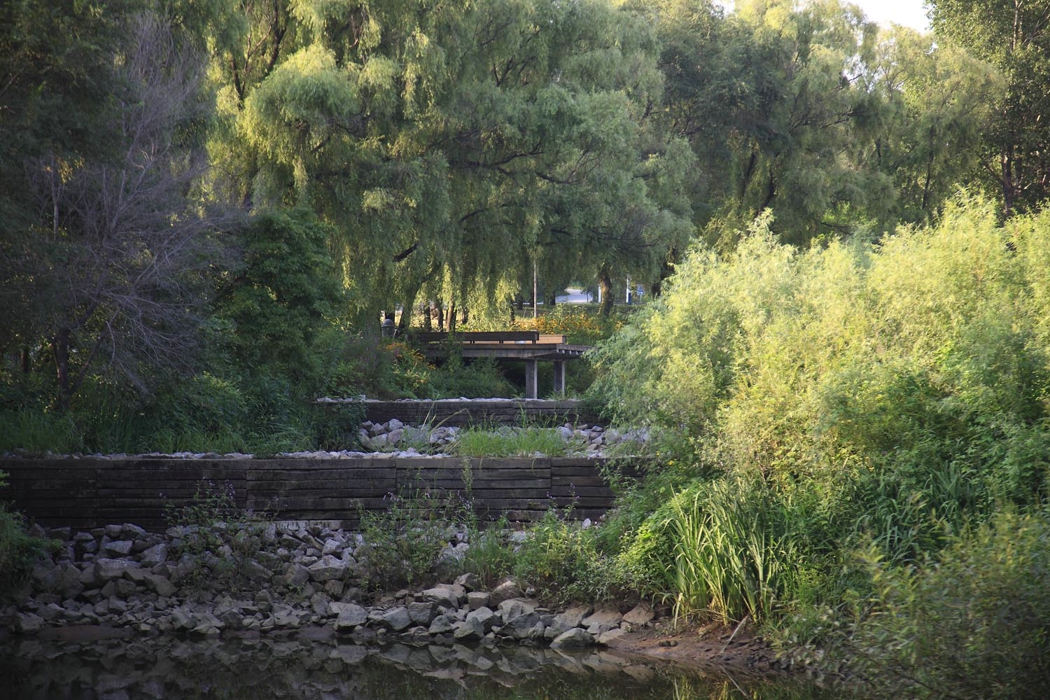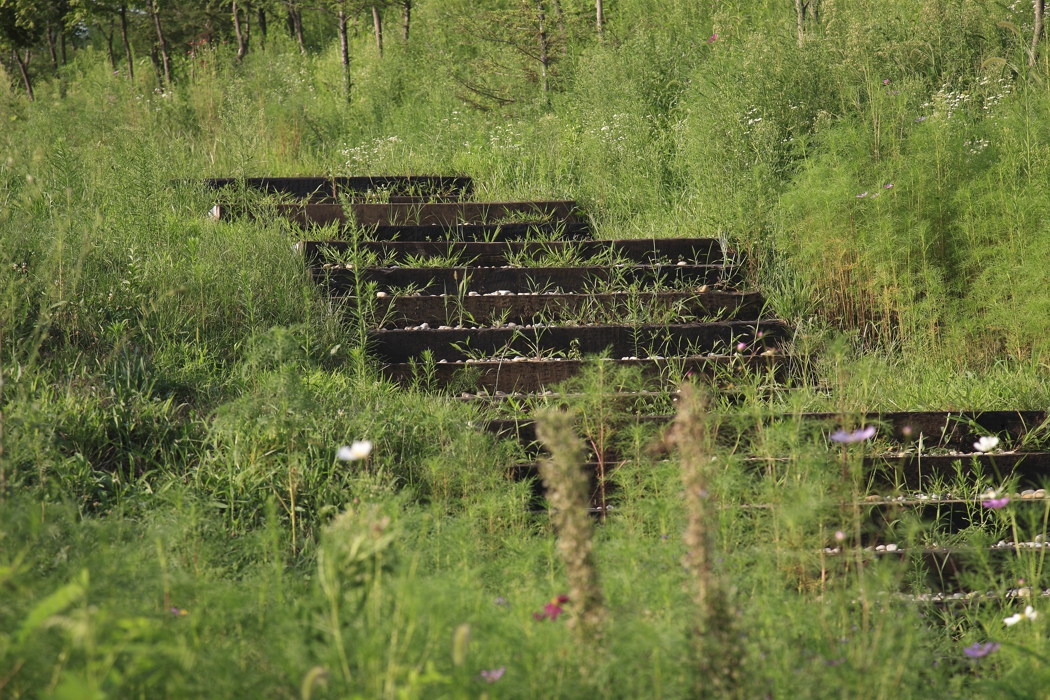Liaoning Police and Justice Administrator College Sponge Campus
Project Information
- Project Location:
- China Shenyang, Liaoning
- Project Scale:
- 24.7 Hectares
- Design Time:
- 2007
- Build Time:
- 2011
- Client:
- Liaoning Police and Justice Administrator College
- Related Papers
Project Profile
1. Project Statement
This project comprehensively utilizes rainwater detention technology, including using terrain for surface runoff management and designing existing mountain gullies as rainwater detention areas. The project integrates reclaimed water use, water purification, habitat creation, and the creation of recreational environments within the campus.
2. Objective and Challenge
The new campus of the Liaoning Police and Justice Administrator College is located at the southern foot of Tianzhushan in Dongling, Shenyang, covering an area of 25.08 hectares. After completion, the campus will accommodate 4,000 faculty and students. This project is the first attempt in the mountainous area of Shenyang to replace municipal stormwater pipelines (excluding culverts) with a surface ecological drainage system. This shift from traditional rapid drainage to an ecological rainwater management system collects, detains, and utilizes rainwater, transforming the once desolate and dangerous gullies into the central water feature axis and artificial wetlands of the campus.
In 2007, Beijing Turen Design won the design bid and was subsequently commissioned by the college to carry out detailed planning and architectural design for the new campus. The landscape engineering design started in 2010, following the completion of most of the campus layout and construction, and was completed in 2011. The project faced four major challenges:
Steep Slopes and Rapid Runoff: Severe soil erosion, with alarming erosion conditions in existing gullies and steep slopes.
Limited Flat Land: Limited space for rainwater detention requiring feasible technical measures for water source assurance and water quality maintenance.
Integration of Ecosystems: Integrating the rainwater ecosystem with the overall campus landscape to enhance the campus's aesthetic value.
Stormwater Management: Shifting from traditional rapid drainage systems to a comprehensive rainwater management approach.
The "Urban Rainwater Management Green Sponge Technology" was applied to all aspects of the campus ecological rainwater system design and ecological landscape water system design. The landscape design, aligned with the detailed planning and architectural design, established an ecological water system that fundamentally changed the traditional municipal drainage system by combining rainwater detention, utilization, and landscape creation with soil and water conservation and plant landscape construction. This approach maximized ecosystem service functions.
3. Design Strategy
a. Establish a Comprehensive Rainwater Ecological Discharge and Collection System:
Due to extensive new construction and disruption to the site, it was crucial to guide rainwater into gullies orderly and controllably. During the rainy months of July and August, rainwater overflows in the gullies, creating dynamic water features. Excess rainwater is smoothly discharged into the Hun River through overflow wells and culverts.
Measures to maximize rainwater collection include:
- Ecological Ditches: Continuous ecological drainage ditches along roads, planted with grass and gravel, collecting rainwater into storage ponds at intervals.
- Storage Ponds/Depressions: Designed as part of terrace landscapes, planted with wetland plants to meet water collection needs and maintain visual appeal.
- Gullies, Mountain Ponds, and Streams: Establishing a stepped water storage pond system and forming streams and lakes downstream, serving as the core of rainwater storage, landscape creation, and flood safety.
b. Slow Down Rainwater and Address Soil Erosion:
- Stepped Drainage Systems: Reducing surface water flow and increasing ground cover to address soil erosion.
- Gully Designs: Multi-tiered pond systems with materials to reduce water impact and protect slopes with plants.
- Terrace Landscapes: Preserving natural slopes and using retaining walls to mitigate erosion.
c. Efficient Use of Collected Rainwater, Maintenance of Water Features, and Water Quality:
Rainwater is used as the main source for landscape water features and irrigation, supplemented by reclaimed water. The central water system collects rainwater, stored in stepped ponds, enhancing water infiltration, reducing surface runoff speed, and maintaining water quality through plants and artificial structures.
d. Vegetation System Based on Water Ecology:
The new campus vegetation system integrates "Central Green Corridors" connecting "Feature Nodes" within the "Mountain Forest Matrix," forming a unique landscape of shaded valleys, open plazas, and atmospheric mountain forests.
e. Pedestrian Traffic System to Enhance Landscape Utilization:
A pedestrian traffic system centered around the central water corridor, free from vehicle interference, connects the campus's north and south gates, providing a scenic and enjoyable walking route for students and faculty, enhancing the campus's landscape accessibility.
4. Conclusion
The completed new campus is lush, vibrant, and harmonious, with rich biodiversity and sustainable water management. The artificial wetlands cover 11,550 square meters, with a maximum storage capacity of 33,340 cubic meters, significantly improving environmental and social benefits for the 4,000 faculty and students. The rainwater collection system provides substantial irrigation water, saving costs and benefiting the ecosystem.
